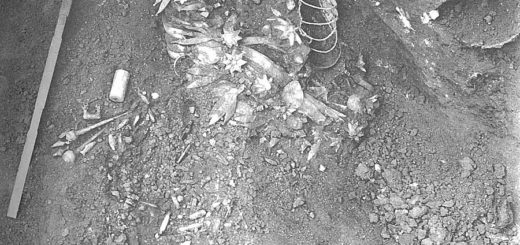Black Death Mass Burial Site Discovered At 14th-Century Monastery Hospital
An extremely rare Black Death burial site has been found at the site of a 14th-century monastery hospital at Thornton Abbey, Lincolnshire.

As many as 48 skeletons, many of which were children, were victims of the Black Death, according to archaeologists from the University of Sheffield.
The Black Death was one of the worst pandemics in human history. It devastated European populations from 1346-1353 and resulted in the deaths of an estimated 75 to 200 million people. The presence of such a large burial site, containing both male and female adults, as well as 27 children, suggests the local community was overwhelmed by the Black Death and was left unable to cope with the number of people who died.
Dr Wilmott said that there are only two 14th-century sites, where Yersinia pestis (the bacterium responsible for the plague) has been identified; these sites are historically documented cemeteries – emergency burial grounds – organized by London authorities due to the very large numbers of the urban dead.
Now archaeologists will search after the everyday objects these people left behind, because these artifacts can help reconstruct the life they led before they died.
One such object has been already found in the excavated hospital building; it is a Tau Cross, a small pendant, which was used by some people as a supposed cure against a condition called St Antony’s fire, which in modern day science is probably a variety of skin conditions.
Teeth samples from the skeletons found at the Thornton Abbey site revealed the presence of Yersinia pestis, which is documented to have reached Lincolnshire in the spring of 1349.
The Black Death – one of the worst pandemics in human history – killed from 75 to 200 million people in Europe from 1346 to 1353.



 Creators of mankind
Creators of mankind Description of “Tall white aliens”
Description of “Tall white aliens” Where they came from?
Where they came from? About hostile civilizations
About hostile civilizations The war for the Earth
The war for the Earth “Tall white aliens” about eternal life
“Tall white aliens” about eternal life Video: “Nordic aliens”
Video: “Nordic aliens” Aliens
Aliens Alien encounters
Alien encounters The aliens base
The aliens base UFO
UFO Technology UFO
Technology UFO Underground civilization
Underground civilization Ancient alien artifacts
Ancient alien artifacts Military and UFO
Military and UFO Mysteries and hypotheses
Mysteries and hypotheses Scientific facts
Scientific facts


















